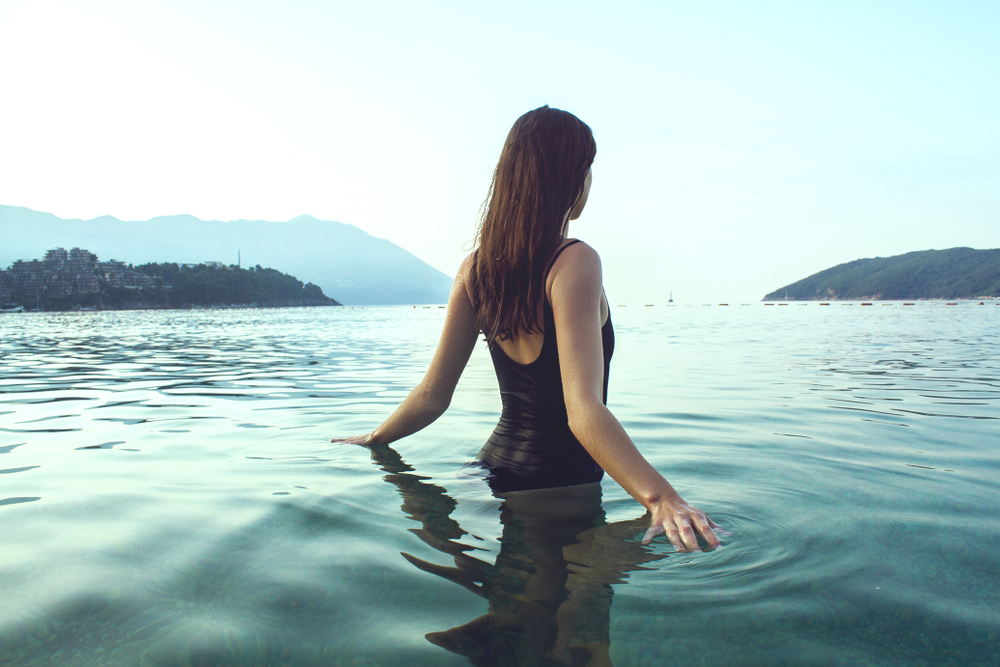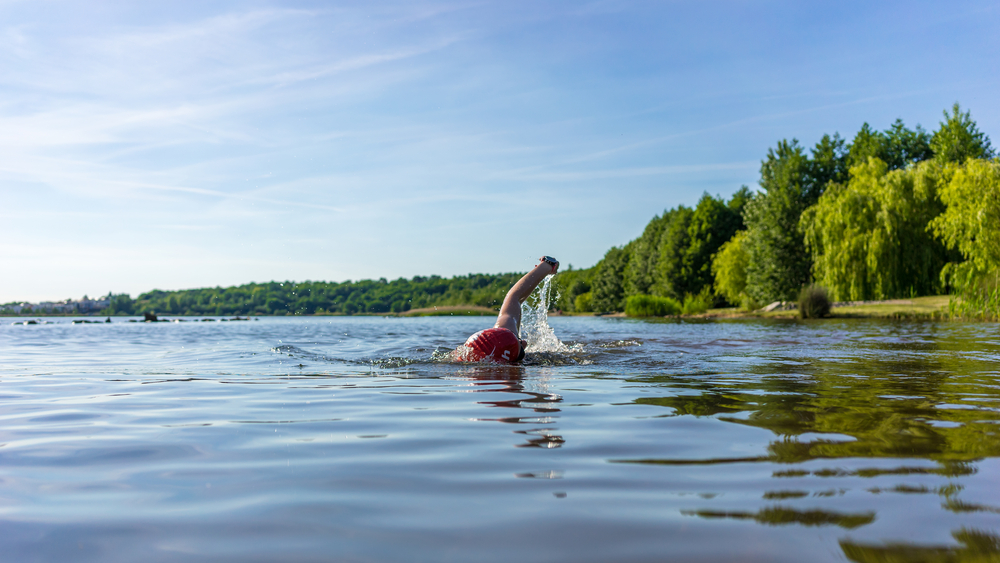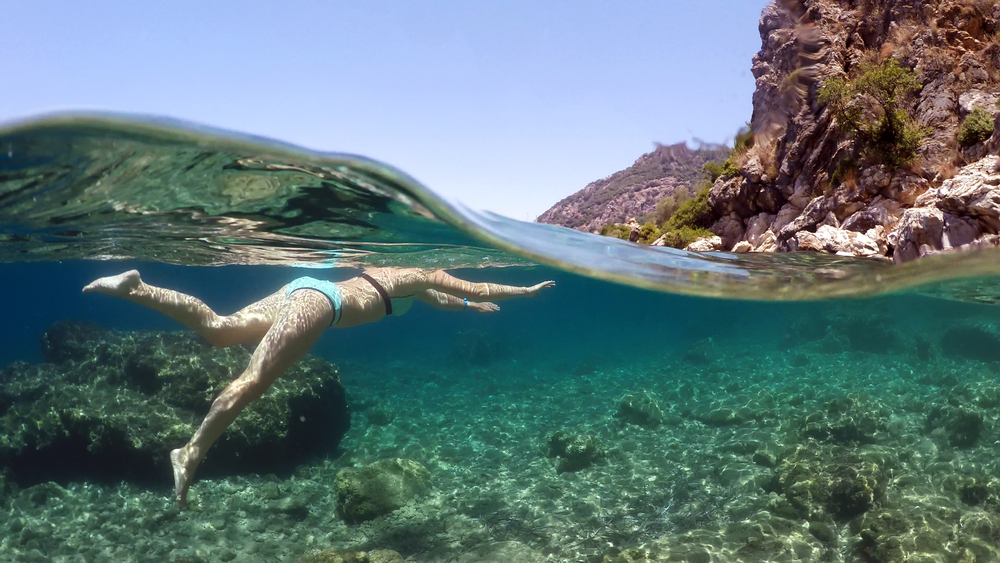Want to try open water swimming for the first time this year? Don’t be nervous! It’s easier than you think to take to the open lake, river or sea – you just need to do a little forward planning before your wild dip. Here’s our guide to everything you need to know.
If you have never swum in open water before, the thought might be both exciting and daunting. As you can imagine, it is quite different to swimming in a pool. There is no black line to follow, often there will be no lifeguard, the temperature and the visibility will vary, but you will get to swim in beautiful settings, take in your surroundings and enjoy the beauty of nature and wildlife around you. One of the main joys of wild swimming is escaping the crowds and immersing yourself in nature.
It is important to understand the difference before you take the plunge, so that you approach wild swimming safely and with a confidence that will make your experience even more enjoyable. Selkie Swim is an open water swimwear brand with a passion to empower swimmers of all abilities to push their personal boundaries.
Here is some advice from experienced open water and wild swimmer Katia Vastiau, who is part of #TeamSelkie. She runs the safety team at the Queenford Open Water Swimming venue, so has lots of knowledge on the safest ways to approach swims in lakes, rivers and the sea. This piece also includes some top tips from Simon Griffith, founder of the Outdoor Swimmer magazine.
How to enter open water safely for a wild swim
- Depth and entry and exit points
Unlike in the pool, where there is a ladder and sides to get into the water and signs about depth, all those things vary widely in open water. Finding a safe entry and exit point before your swim is one of the most important things to do before starting to swim outdoors.
Depending on where you go, there might be some steps, the occasional ladder, a beach like area to gradually walk in or, in some places, a direct drop.
The most important thing is finding a place where you will be able to get out of the water easily.
Depth will also vary; shallow water will make it hard to swim properly, whilst deep water will be better for swimming, but not knowing how deep a place is, although technically irrelevant, might make your first experiences more unnerving.
However, these are the very things that will give you the beautiful sense of freedom that comes with wild swimming. Once you are in the water, you can pretty much swim in any direction you want.

Enter the water gradually, take time to compose yourself and splash some water on your neck and face, which will reduce the cold water shock. Take time to feel comfortable. Even if you usually swim front crawl, start with a bit of breaststroke, compose yourself, stay close to the edge and take deep slow breaths. When you feel calm and your breathing is under control, then you can start swimming and enjoy!
What temperature should the water be for a safe wild swim
Depending on location and season, the temperature of the water outdoors will vary widely, but will generally be cooler (sometimes much cooler) than that of your local pool. In UK summertime, lakes, rivers and sea will typically vary from the low teens to 20C, with occasional peaks into the twenties in shallower water basked in sunshine.
The lower temperatures will restrict the time you can safely stay in the water for, but equally, colder water will give you an exhilarating feeling. Again, you will need to manage the risk against the feel-good factor to stay safe.
If you are likely to swim regularly in relatively cool water, you might like to invest in a swimming wetsuit, or even some neoprene socks and gloves and a good swim cap, which will allow you to stay warmer for longer.
It all depends on what you want to get out of your wild swims, but the main aim is that you enjoy your swim safely!
How can I check if open water is safe for swimming?
Unlike in the pool, the visibility underwater can changed from one swim spot to the next, sometimes varying extremely. Cloudy water might be a little daunting if you are used to the crystal clear water of a pool, but this is not a reflection on the water quality.
If you are swimming in a silty river and there is quite a bit of flow, then it is likely to be quite opaque, but it shouldn’t affect your swimming. It will mean, however, that you should be careful when entering the water and not jump in without checking it is deep enough or that there aren’t any obstacles like branches or big stones in your way. Again, this is a little exercise in risk management at the start that will keep you safe.
If you can’t find any information about the quality of the water where you are planning to swim, then use common sense. If the water looks contaminated, stagnant, is smelly or full of rubbish, or if you are close to a sewage outlet, then it is not a good idea to swim there.
On the other hand, whilst the thought of fish in the water, or weeds brushing your feet as you swim might be daunting, you should not let that put you off. These features are generally a sign of better water quality and will do you no harm. Besides, swimming outdoors is all about embracing your natural surroundings.
How to check flow, tides and waves are safe for swimming
Depending on where you would like to swim, you should always be aware of, or acquaint yourself with, the movements of the water. Just as the sea comes with tides, waves and chop, rivers will also flow at speed, sometimes faster than you can swim.
Even lakes can get quite choppy on windy days. This will always vary according to the weather and time of year, so always check ahead and use a common sense approach when you arrive at your swimming destination to decide whether or not you should get in.
Although waves and flow can be fun and exciting, the rougher conditions will also make it more tiring to swim in and might make it harder to see where you are going. Your ability to swim in rougher water will grow as you get more experience, but again it is important to be safe, to stay within your ability.
Do you need to be a strong or fast swimmer for open water?
The short answer is no. When swimming outdoors, you can choose the type of swimming you want to do. You might want a refreshing plunge in a beautiful place, or you might want to cover some distance for fitness. It is good to remember that, usually, swimming outdoors will be more tiring than swimming in the pool, but you will get stronger as you get more experience.
As a rule of thumb, you should be able to swim several hundred metres without stopping, be confident putting your head under water and being out of your depth, and you should be able to keep yourself afloat by treading water or rolling onto your back.
When you first venture into open water, you might feel tight-chested or that your breathing is affected, but this is fairly common. Be prepared for this feeling and know it will pass.
How to get started in the open water
Although we mentioned the lack of lifeguards, there are more and more lakes and venues which have opened for swimming that do have safety measures like this in place. It might not always be the wildest place (some are, some are more urban but still a perfect escape from the pool), but it is a nice place to start and get a feel for what it is like to swim outdoors. There will be others around to chat to, give you tips, and someone to keep an eye on you and reassure you.
The outdoor swimmer community has grown so much over the last few years, that you will probably find that there is a club or informal group of enthusiasts in your local area.
Outdoor swimmers are a friendly and welcoming community of mixed abilities, genders, ages, backgrounds and are generally keen to support newcomers to open water. It will also mean that they will have local knowledge of the best spots, the conditions, the safest places and things to look out for.
The most important rule is to never swim alone; have someone else swimming with you or looking out for you from the edge and who would be able to help you or call for help if you experienced difficulties.
Outdoor swimming has grown in popularity so much, that it even has its own magazine full of tips, advice, ideas and stories. Outdoor Swimmer is a hub for information, including places to swim, and is well worth having a look at before you venture outside, and after!









